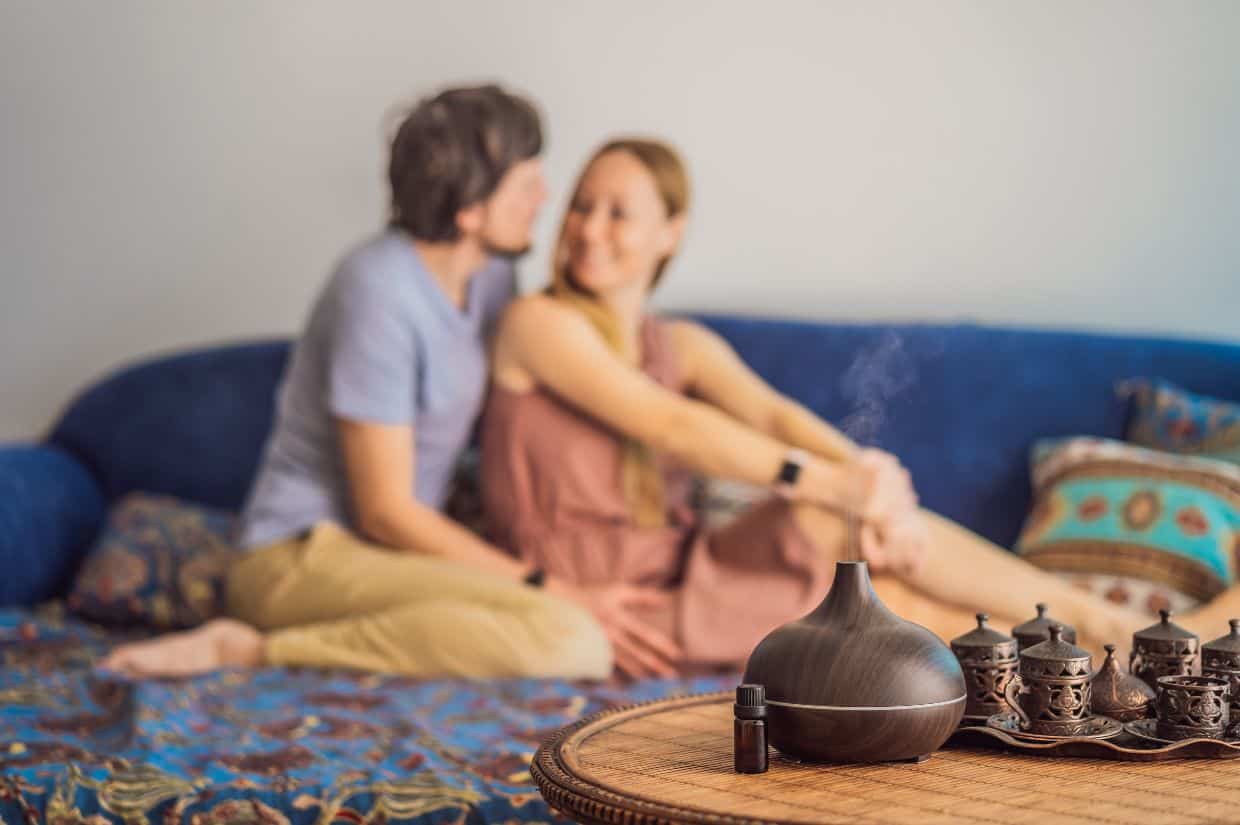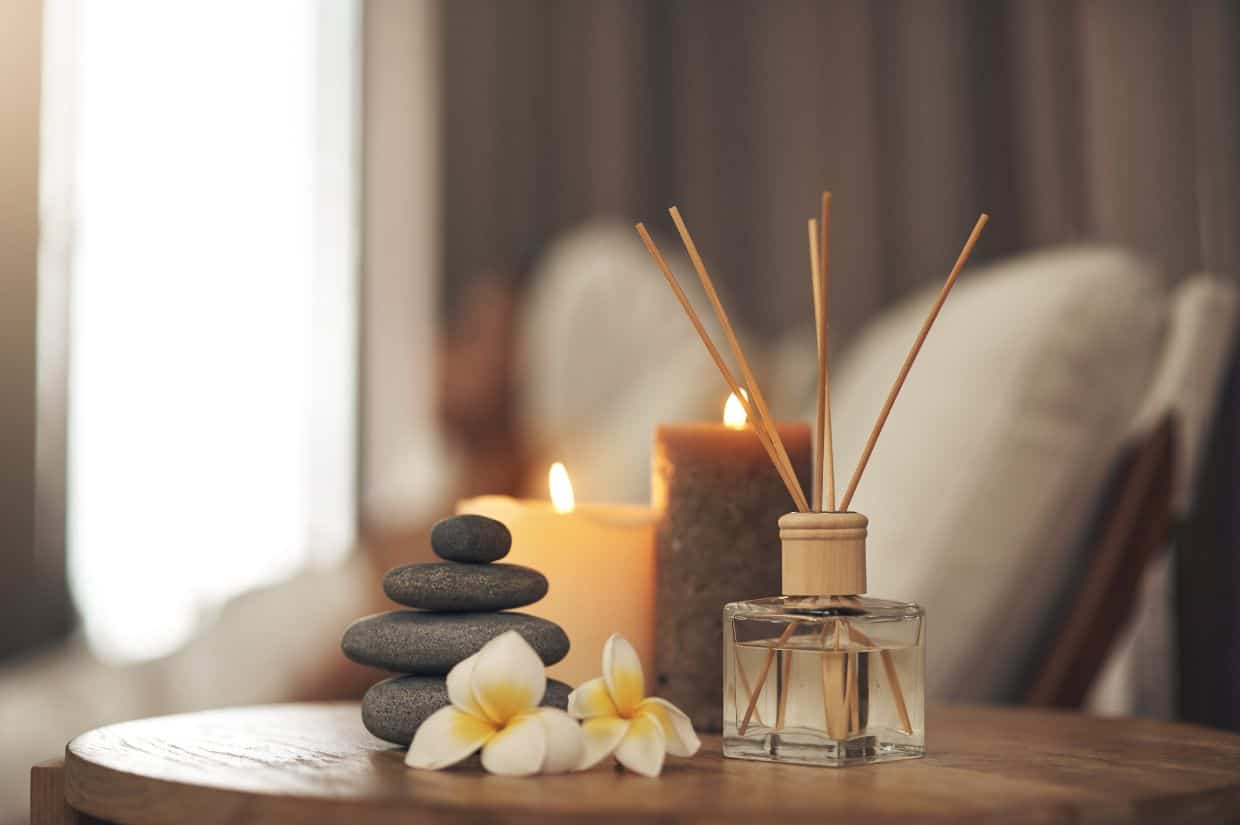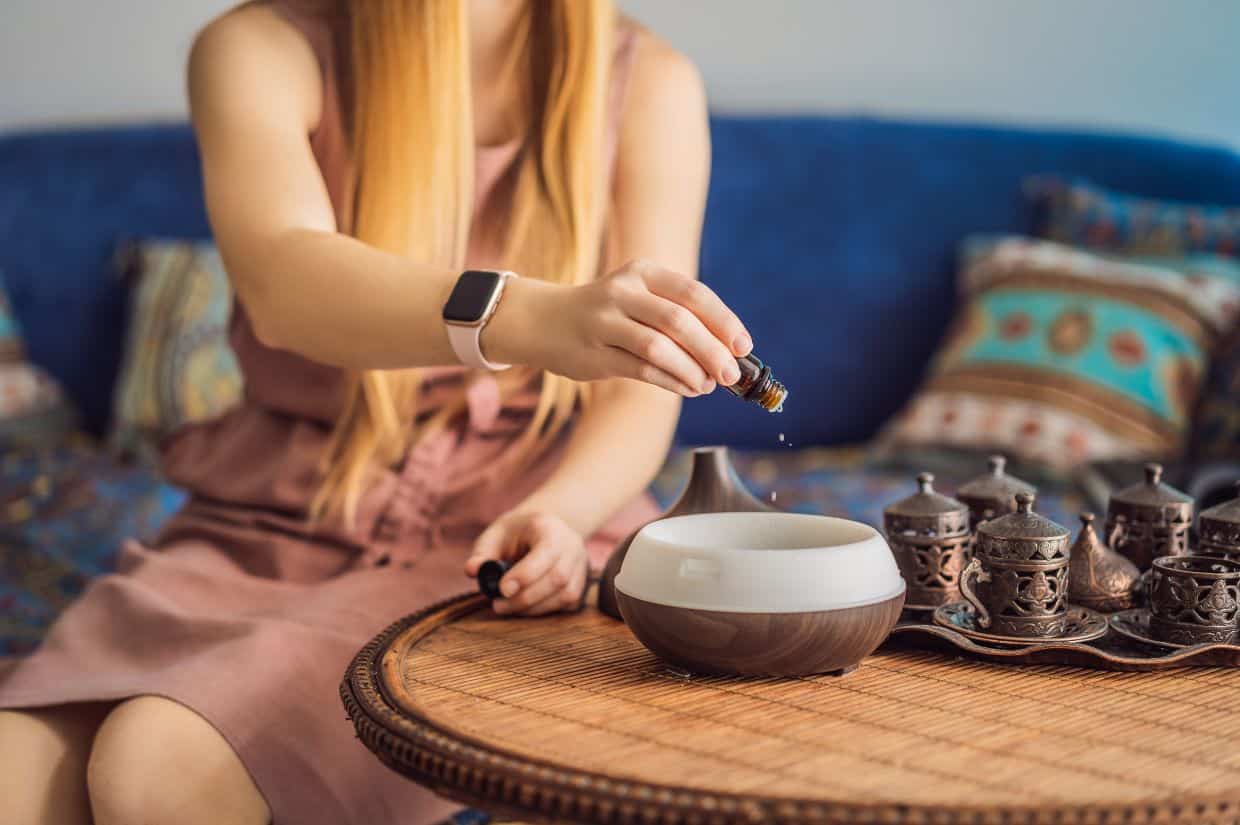Unlock the secret to creating instant ambiance with the ease of one device: the diffuser. What is a diffuser, you ask? Let’s discover how this inconspicuous little machine can pump a space full of aroma and benefit everyone around.

The science behind diffusion and why it matters
Diffusing essential oils is a quick shortcut for setting the mood for your next date night, study session or relaxing bath.
In short, a diffuser is a small device that disperses essential oils into the air. Oils are diluted in water and then released into the space at a regulated concentration over a period of time.
This process works with aromatherapy principles, a holistic practice that uses plant extracts to promote physical, mental and emotional well-being.
According to Medical News Today, aromatherapy is a complementary therapy for these conditions:
- Stress, anxiety and depression
- Fatigue and insomnia
- Pain and muscle aches
- Headaches
- Nausea
- Circulatory issues
- Menstrual and menopausal problems.
Principles of aromatherapy
As aromatic molecules disperse into the air, we inhale the small particles and they interact with our olfactory receptors. These receptors are located in our nasal cavity and help us smell. Receptors first detect a smell and then communicate the stimuli to the brain, allowing us to recognize and enjoy different scents.
Scientists identify the limbic system as the recipient of these signals. This system is principally involved in behavioral and emotional responses, memory and stress, often called the fight or flight response.
Familiar smells, memory and emotions are deeply related. That’s why a vanilla diffuser blend can remind you of holiday sugar cookies baking in the oven and invite warm and comforting feelings associated with quality family time during the winter holiday season.
Furthermore, highly concentrated natural extracts from leaves, flowers, stems, roots and fruits contain compounds such as terpenes, esters, aldehydes and phenols which have unique effects on the body and mind. Therefore, different scents can target various aspects of wellness.

What are the different types of diffusers?
A diffuser is an easy way to fill a space with beneficial scents customized to your needs and preferences.
There are four main types of diffusers.
Ultrasonic diffusers
An ultrasonic diffuser contains a small disc that vibrates to generate ultrasonic waves breaking down essential oil-infused water into tiny particles. The liquid transforms from the water tank into a fine mist that gets pushed into the air.
These are especially beneficial if you also want to add moisture to the air.
Nebulizing diffusers
Nebulizing diffusers rely on a suction effect, created by exerting high pressure in a small space, to draw essential oils from a glass reservoir into atomized particles and then release them into the air.
This plastic-free design is one of the purest ways to diffuse oil.
Evaporative diffuser
There are two types of evaporative diffusers: active and passive.
Active evaporative diffusers use a small fan to accelerate the evaporation and may or may not require diluting oil in water. This design produces a quick effect but may degrade the oil’s potency.
Passive evaporative diffusers include reed diffusers, pendants, clay or terracotta diffusers and room sprays. These are very affordable options for beginners. However, they produce a more subtle and short-term effect.
Heat diffusers
Heat diffusers may use a tea candle or eclectic power as the heat source. The oils are warmed, so consider using heat-resistant options. This is a silent method, great for small spaces.

How to use essential oils for ambiance
Creating the perfect ambiance with essential oils is a delightful experience. Essential oils can produce many positive effects, from boosting focus and productivity while you work or declutter the house to enhancing sleep quality and relaxing after a long day.
Diffuse single oils
Piedmont Healthcare rounds up the most popular essential oils and their benefits.
Here are some highlights:
- Clary sage for relaxation
- Lavender for better sleep
- Lemon to improve concentration
- Peppermint to boost alertness
- Rosemary to increase focus
- Ylang-ylang to decrease stress
Diffuse essential oil blends
Instead of using a single oil, you can make blends based on your desired result or favorite feature ingredient.
Take ginger essential oil diffuser blends as an example. Each unique blend recipe includes ginger essential oil, known for invigorating the mind and reducing feelings of fatigue and lethargy.
Other blends may include:
- Lavender + bergamot
- Rosemary + peppermint
- Lemon + tea tree
- Orange + grapefruit + lemon
- Frankincense + orange + lavender
- Ylang ylang + sandalwood + bergamot
I diffuse lavender and lemon essential oil on my nightstand each night. The lavender helps me relax and get a good night’s sleep, while the lemon helps me manage seasonal allergies.
— Sage Scott, Everyday Wanderer
Opportunities for ambiance
Create memorable moments with custom scents that yield an intentionally impactful experience for everyone in the room.
Consider using a diffuser for:
- Romantic evenings
- Productivity and focus
- Self-care Sunday
- Special occasion get-togethers
- Relaxing at night
- Social gatherings and parties
While diffusing with essential oils is appropriate all year long, you may be more inclined to do so during the dark, cold weather months. When you feel cooped up, use woodsy essential oil blends to bring the great outdoors inside and freshen the air.
Tips for diffusing at home and in the office
First, always consider the health implications of certain oils and speak to your physician about any concerns or questions.
Second, keep the diffuser and all essential oil bottles out of the reach of children and away from pets.
Thirdly, each type of diffuser requires a specific level of cleaning and maintenance for the best long-term results. Read over the manufactures guide and follow the directions accordingly. Wiping with a damp cloth and natural soap is sufficient for cleaning a machine.
Final thoughts
In conclusion, an essential oil diffuser is a helpful tool to assist your efforts of creating a natural and enjoyable ambiance for any occasion that promotes holistic well-being.
Curate the scent to perfectly match the mood and enjoy a pleasant atmosphere in any indoor space.
Jessica Haggard is the creator of the blog Easy Homemade Life. She inspires and supports homemakers with easy recipes, natural home cleaning tips and DIY tutorials for personal care products to promote a happy and healthy home environment.